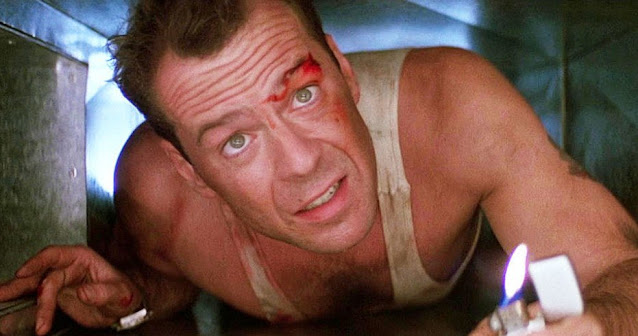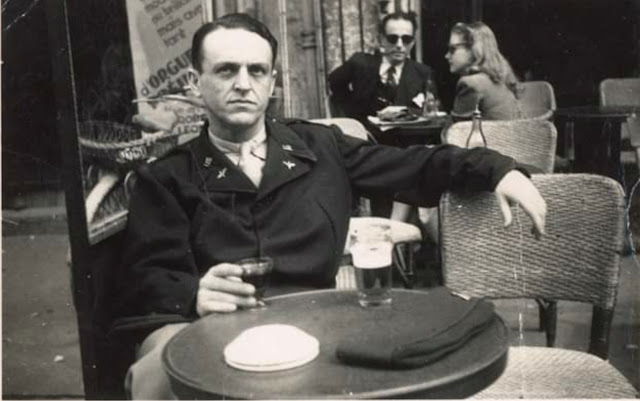The Evolution of 'Batman'
It was 1939, the dawn of the Golden Age of Comic Books, and the editor of Detective Comics, Vin Sullivan, was looking for a new character to capture the imagination of America’s kids. The year before, ‘Superman’ had landed on the pages of his rival, Action Comics, and had instantly ignited an interest in superheroes. Figuring that a similar “super-duper” hero might also work for DC Comics, Vin Sullivan called in cartoonist Bob Kane, then 18, and set him to work on designing a new character. A few days later, young Bob Kane returned to his editor with ‘The Batman.’
“It started with an idea that Bob suggested,” said DC Comics editor Sullivan. “Then he came back with pages of this new character… I don’t think anybody realized that it would develop into what it has become today. In fact, I’m sure they didn't… I just thought it was something that would pep up the magazines.”
Batman creator Bob Kane recalled, “The movie The Mark of Zorro had left a lasting impression on me. Later, when I created ‘The Batman,’ it gave me his dual identity.” 1920’s Mark of Zorro starred an athletic, flamboyant Douglas Fairbanks, playing a wealthy fop who transformed himself at night into a masked crusader for justice. Another film that gave Bob Kane some ideas was 1930’s The Bat Whispers, featuring Chester Morris as a detective who is also secretly a costumed killer known as ‘The Bat.’ Kane explained, “As an artist, you’re influenced at one point by another character, but then you embellish and bring your own individuality to it.”
 |
| The Bat Whispers (1930) |
“I’d also seen a book about Leonardo da Vinci, a book of inventions,” Kane added, “and he had drawn a flying machine, an ornithopter. It was a man on a sled with huge bat wings.” The device was basically a glider with wings like those of a bat, and Kane thought those wings could work for his new creation.
At first, Kane designed a hero with a black mask like Zorro’s, stiff black wings like Leonardo’s ornithopter, and red tights much like Superman’s. He then asked his friend Bill Finger for advice. “I didn't like the wings,” Finger recalled, “So I suggested he make a cape and scallop the edges, so it would flow out behind him when he ran and would look like bat wings.”
Then Bill Finger found a picture of a bat in the dictionary and showed Bob Kane its ears. On Finger’s recommendation, Kane’s simple ‘Zorro’-like mask was transformed into a black cowl with points that were echoed in the cape and the gloves. The repetition of the triangular motif created an immediately memorable image, which Bob Kane knew would be an advantage. “Almost every famous character ever created had a kind of simplistic, definitive design that was easily recognizable, and that’s what I was striving for with ‘Batman,’” Kane said.
Bob Kane was an artist, not a writer, so he asked his friend Bill Finger to create some dialogue for his new comic. Finger’s inspirations for the text were somewhat more literary than Bob Kane’s had been. He saw the character as a combination of Alexandre Dumas’ swashbuckler ‘D’Artagnan’ from The Three Musketeers and Sir Arthur Conan Doyle’s detective ‘Sherlock Holmes.’ “I wanted ‘Batman’ to have the ability to be hurt,” Bill Finger said. “I patterned my style of writing after The Shadow and old Warner Bros. gangster movies with Jimmy Cagney, George Raft, Edward G. Robinson and Humphrey Bogart.”
The first Batman comic was released in May 1939, in Detective Comics No. 27. Its ‘Batman’ was a detective intent on avenging the murder of his parents, a sinister figure who dressed up as a bat to terrify his underworld victims. “When I created ‘The Batman' in 1939, he was a dark, brooding vigilante,” Bob Kane recalled. DC Comics editor Denny O’Neil agreed. “The original ‘Batman’ was dark and foreboding,” O’Neil reported. “The Batman saga is essentially about the night – and shadows in the night. And the fact that somebody in those shadows is on your side.”
 |
| The Batman No. 1 (1940) |
The comic book industry boomed for its first five years, with individual titles by DC selling several million copies apiece. Columbia Pictures brought ‘Batman’ to the silver screen for the first time in two black-and-white serials in 1943 and 1949. In The Batman (1943), a 15-part serial which was filmed during World War II, ‘Batman’ was played by Lewis Wilson, and battled a sinister Japanese spy named ‘Dr. Daka.’ In Batman and Robin (1949), which also played out in 15 installments, ‘Batman’ was portrayed by Robert Lowery, and the dynamic duo faced off against a mysterious criminal called ‘The Wizard.’
 |
| The Batman (1943) |
But after World War II, comic books hit a slump, and many publishers turned to sensationalism to boost sales, releasing comics depicting bondage, transvestitism, and dismemberment. When the McCarthy era began, book burnings and Congressional hearings forced comic books publishers to tone things down. In the ‘50s, ‘Batman’s’ dangerous edge disappeared and he became, according to DC Comics Editor Denny O’Neil, “kind of a scoutmaster.” By the ‘60s, about 70% of the comics industry had closed its doors, and the remaining publishers were mostly putting out cheerful but inane products. Sales were dismal.
Then, in 1966, ABC decided to air a campy 30-minute TV show based on the character. The show only lasted three seasons, but as Denny O’Neil described, “When it was over, it was like someone had turned a switch, and ‘Batman’ was dead as buttonhooks.”
 |
| Batman (1966) |
But the ‘70s saw ‘Batman’ turn serious again with a series of stories written by future DC Comics editor Denny O’Neil, drawn by Neal Adams and inked by Dick Giordano. When he first drew ‘Batman’ in 1968, Neal Adams used an approach that was unusual in comic books of the day, including detailed crosshatching techniques and realistic facial expressions. He also experimented with page layouts and used unusual panel shapes. Though Neal Adams drew ‘Batman’s’ face and figure realistically, he exaggerated ‘Batman’s’ wildly billowing cloak and melodramatic poses for theatrical effect.
 |
| Batman No. 241 (1972) as drawn by Neal Adams |
“We went back to a grimmer, darker ‘Batman,’ and I think that’s why those stories did well,” said inker Dick Giordano. “Even today, we’re still using Neal’s ‘Batman,’ with the long flowing cape and the pointy ears.” ‘Batman’ soon found himself in much darker scenarios, including “The Secret of the Waiting Graves,” a Mexican horror tale, and “Night of the Reaper,” about a killer dressed as Death who has a background of Nazi atrocities. “I just wanted to make ‘Batman’ Gothic and spooky,” Denny O’Neil explained. “I was being influenced by writers like Lovecraft and Poe, and I didn’t think about Gotham City.”
Then, in 1986, came the publication of Frank Miller’s legendary The Dark Knight Returns, which prompted a major resurgence in ‘Batman’s’ popularity and has since become one of the seminal works in comic book history. “I felt that superhero comics had really been held back by a misperception that they were just for kids,” Frank Miller said. “The comic book world had become so utterly pleasant and safe that the idea of somebody dressing up in tights and fighting crime just seemed beside the point.”
 |
| The Dark Knight Returns (1986) as drawn by Frank Miller |
Miller set The Dark Knight Returns in the future, after ‘Batman’ has retired. The despairing, alcoholic ‘Batman’ is forced back into action by the reappearance of his old enemies, and especially by the emergence of roving gangs of mutants who rule the streets of Gotham City. The mutants have killed three nuns and are suspected of stapling a cat to the door of a church. “’Batman’s’ got this gorgeous streak of malice running through him that makes him a really exciting character,” Frank Miller declared. “He’s a bad-ass. That’s his appeal. He’s not a role model. He’s not there to tell us all how to behave. He’s a scary fantasy.”
In 1999, as Tim Burton prepared to take the caped crusader to a new place, ‘Batman’ creator Bob Kane seemed to approve of the new direction his character was taking. “Maybe every 10 years ‘Batman’ has to go through an evolution to keep up with the times,” Kane mused. In 2005, ‘Batman’ made his next evolution, with a complete reboot of the Batman franchise in Batman Begins. Its director, Christopher Nolan, promised that 2008’s The Dark Knight would escalate the evolution of ‘Batman’ even further. Nolan proposed that for ‘Batman,’ “things have to get worse before they get better.”
Sources:
Les Daniels, Batman: The Complete History, Chronicle Books, 1999
Pat Broeske, “Brute Forces…,” Washington Post, 12/25/88
Cindy Pearlman, “From Page to Screen,” Chicago Sun-Times, 6/12/05
Batman Production Information, Warner Bros. Publicity Dept., 1989
Batman DVD, Shadows of the Bat DVD Bonus Material


Comments